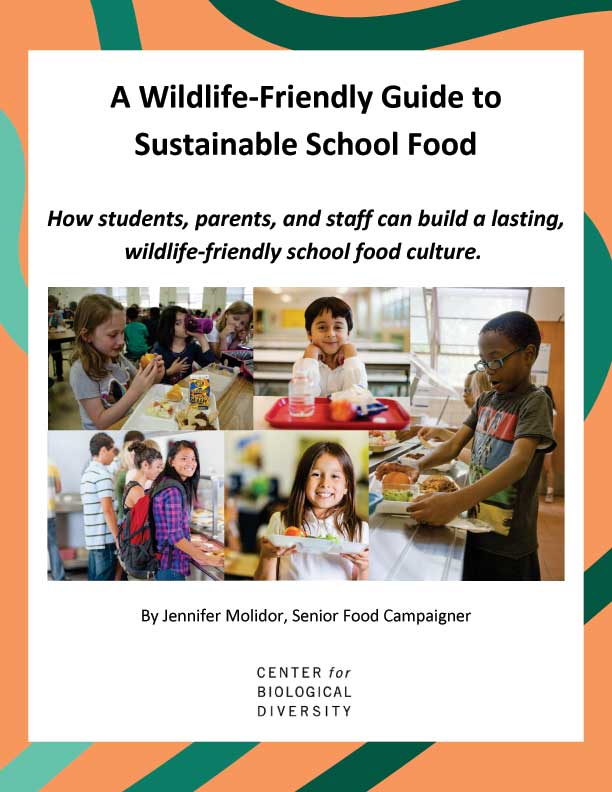A Wildlife-Friendly Guide to Sustainable School Food
How students, parents, and staff can build a lasting, wildlife-friendly school food culture
The Center is launching a new Wildlife-Friendly Guide to Sustainable School Food to add to the arsenal of resources on positive actions for parents, students, school staff, and local communities trying to improve access to nutritious meals and wildlife-friendly foods. Suggestions in the guide can be implemented locally while we work to reinstate support for these programs at the federal level.
Check out the introduction below or read the whole guide.
Please share it with your school or district’s food director (and share this page far and wide on social media).
Introduction: The Urgent Need for Wildlife-Friendly School Menus
Healthy school meals are an urgent priority for the health and well-being of children. With more than 7 billion meals served in American public schools each year, school food has a sizable environmental impact. These meals are a primary source of daily nutrition for many children. We need a system that works for the planet, students, families and schools.
Agriculture is a leading driver of wildlife extinction and the climate emergency. In turn, biodiversity loss and the climate crisis make it harder to grow food, reduce the nutritional value of food, and increase food insecurity and inequity. But some foods come with a higher planetary cost.
Among the highest-emissions foods and largest sources of deforestation, agricultural water use, pollution and habitat loss are meat and dairy. Red meat is the highest food source of climate emissions, while dairy is the leading agricultural use of water. Meat and dairy provide just 18% of global calories but produce the most agricultural greenhouse gases.
This food system is especially destructive to wildlife. For species like gray wolves, bears, foxes, coyotes, bison and many more, the meat industry is their primary threat. Already, 86% of land mammals are now livestock or humans, leaving little room for nature and wildlife.
There is an urgent need to serve children high protein, high fiber, healthy and nutritious food that doesn’t come at the price of wildlife and the planet. Menus that are good for the environment tend to be the most healthy and nutritious too.
Vegetable- or plant-rich foods are higher in fiber than animal-based foods, lower in climate emissions and water use, and more efficient for land use and calorie conversion. One study reduced meat and dairy products in school menus to achieve a 40% reduction in emissions from the baseline, without increasing food waste and consumption or impacting children’s meal satisfaction. Americans eat many times more meat than the rest of the planet.
A landmark study of the environmental impact from farm to fork of nearly 40,000 farms in 119 countries showed switching out half of the most harmful foods with plant-rich foods has a significant result. Beef, lamb, dairy, cheese, lobster, shrimp, crab, and pork are at the high end of the emissions scale, and shifting to plant-based options to replace these items on the menu is a powerful start to creating wildlife-friendly menus. Beef brings 105kg of greenhouse gas equivalent emissions per 100 grams of protein according to the study (tofu produces less than 3.5kg per 100 grams).
Building wildlife-friendly menus and a wildlife-friendly food culture in schools that promotes the protection of global biodiversity is way of uniting the goals of healthy, fair, culturally diverse and sustainable nutrition programs.








